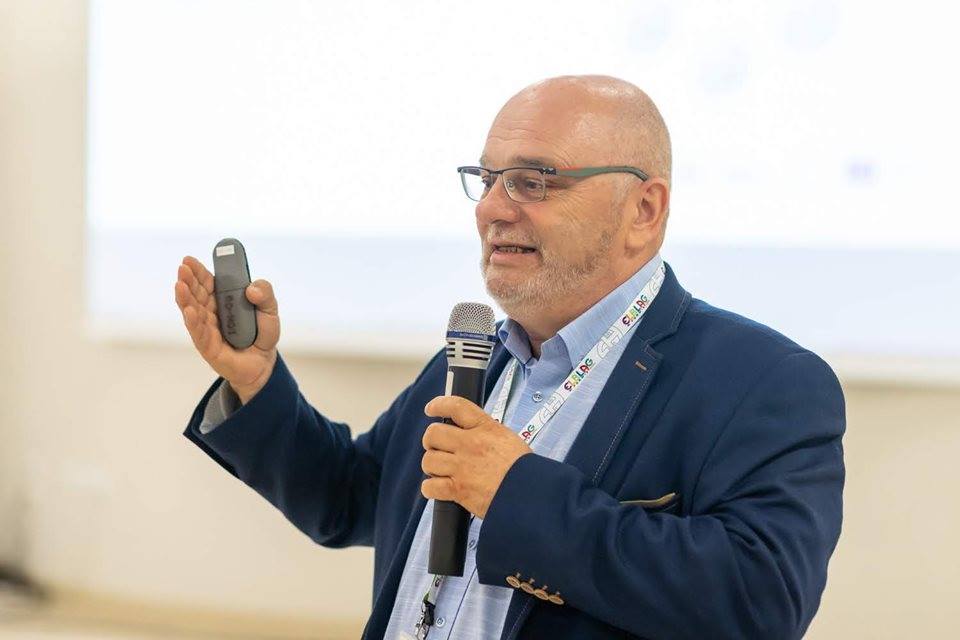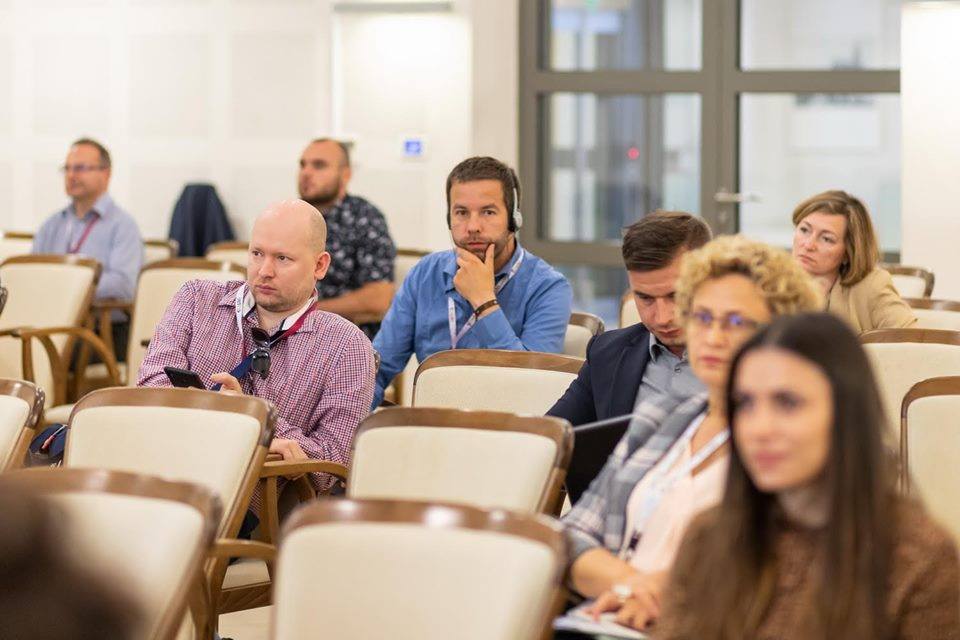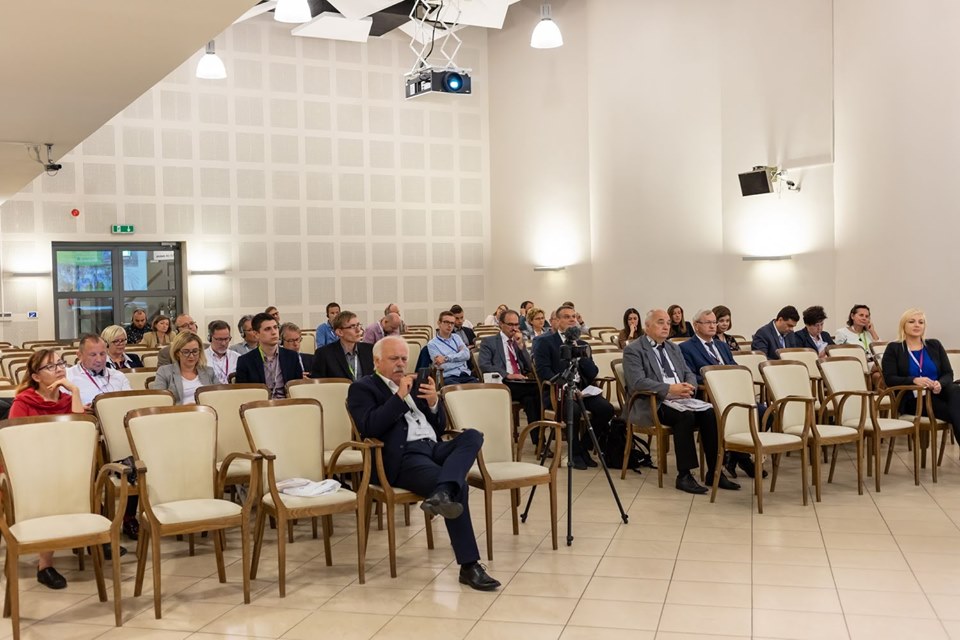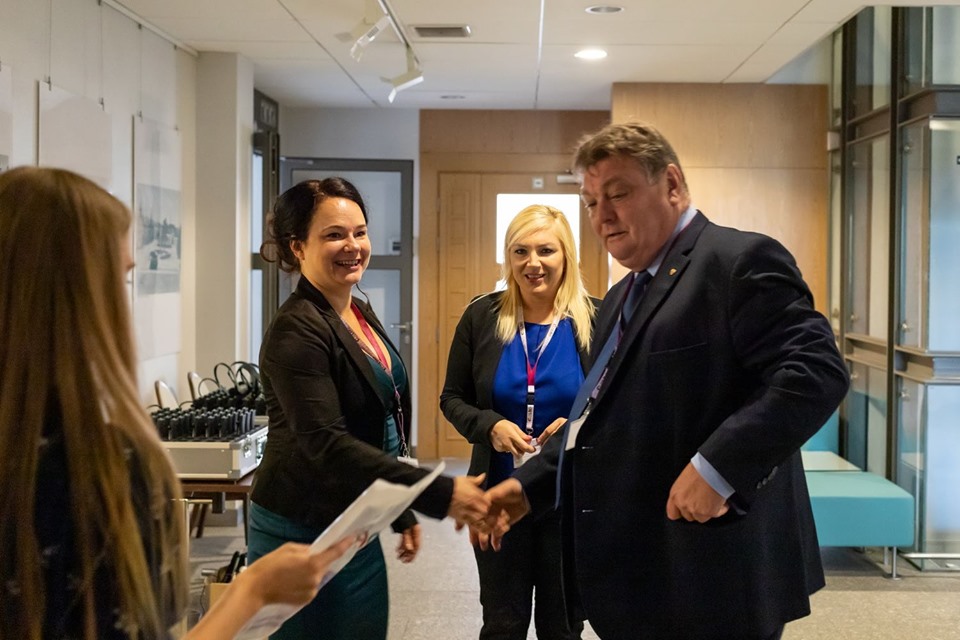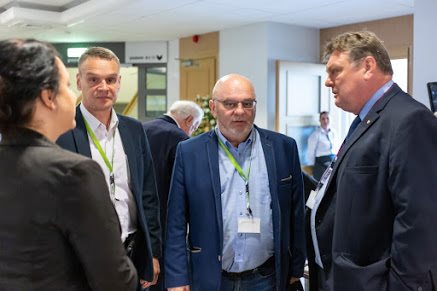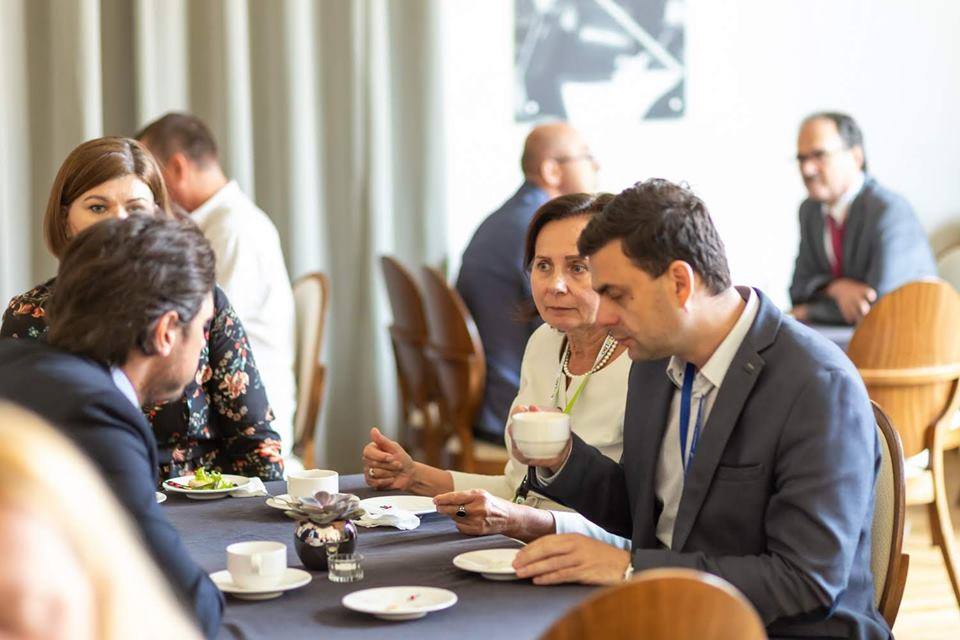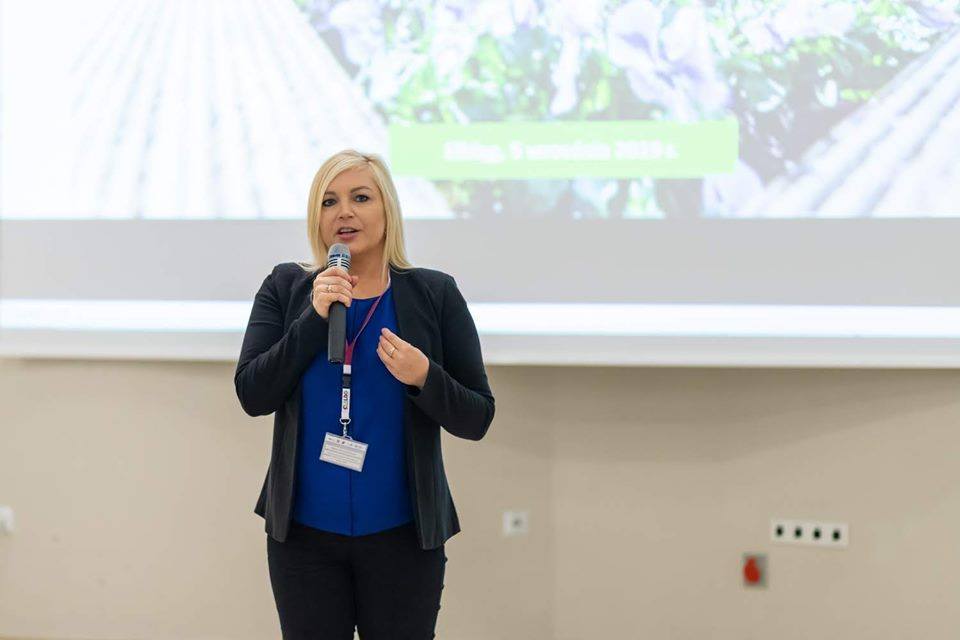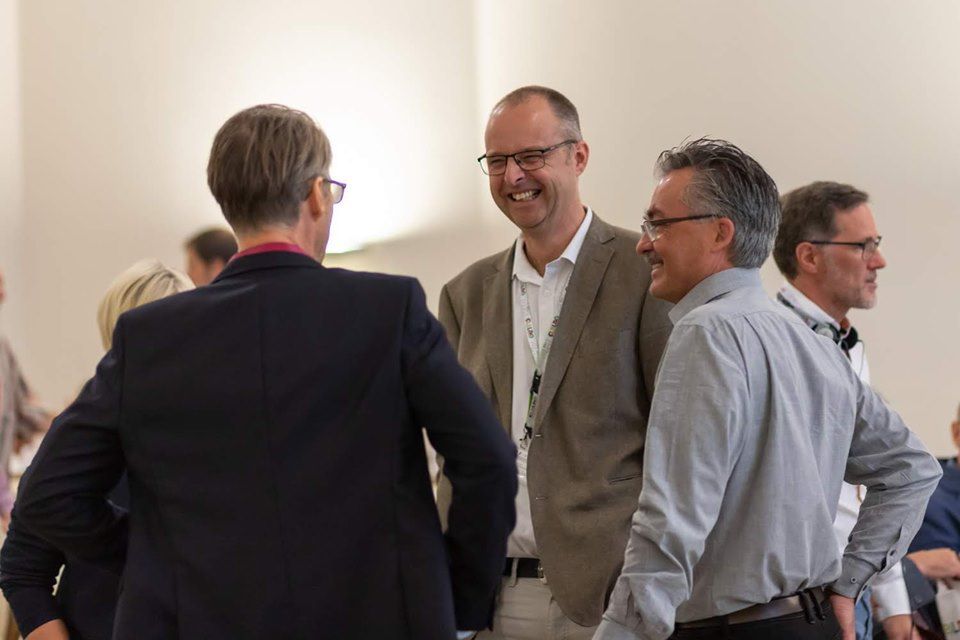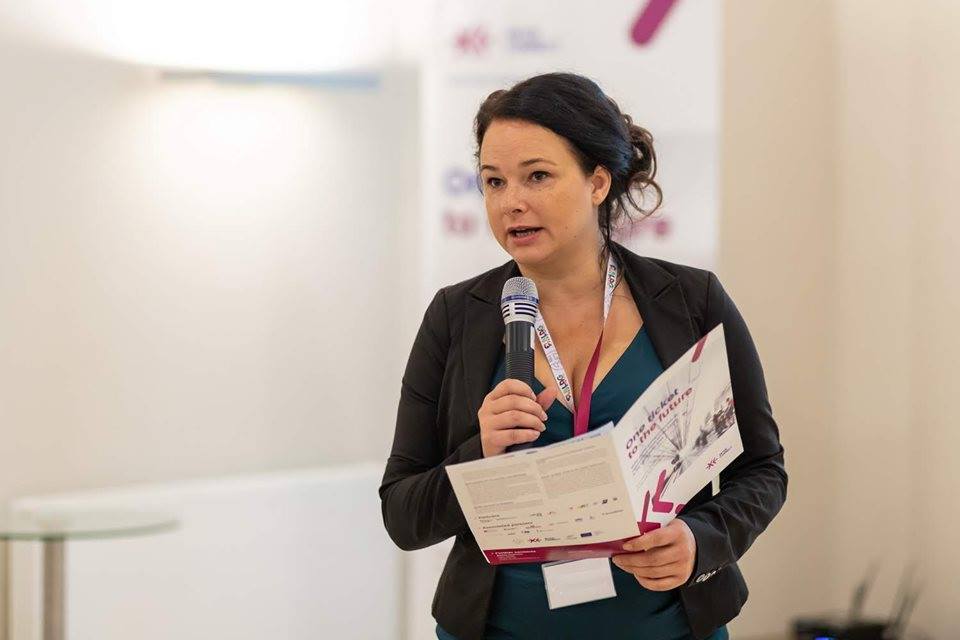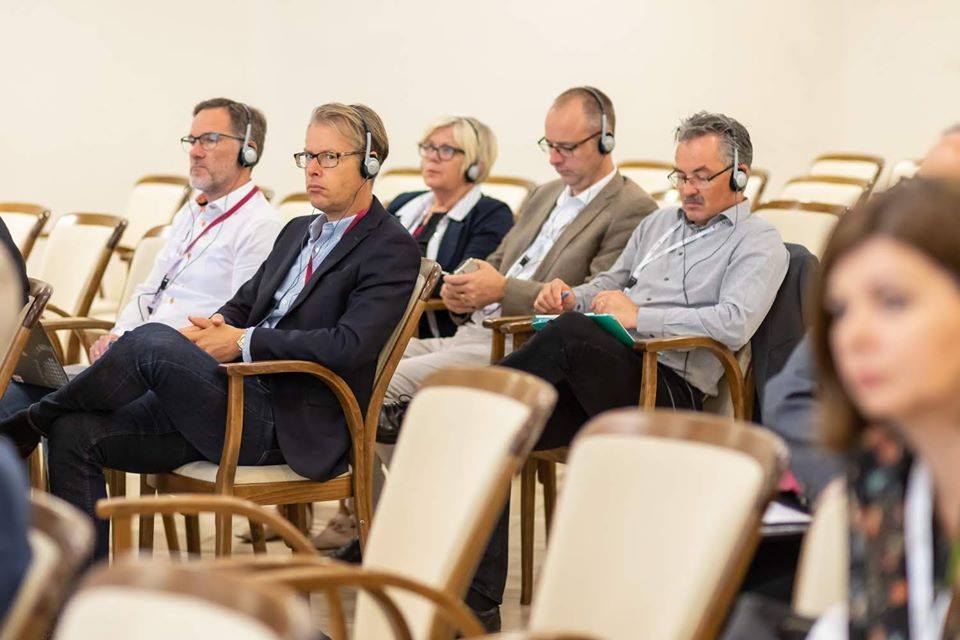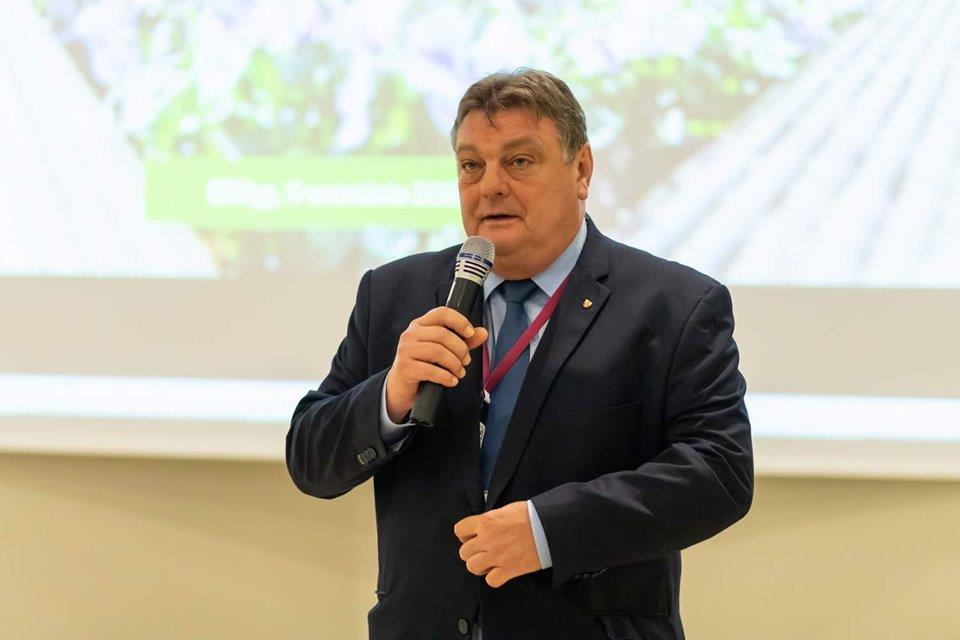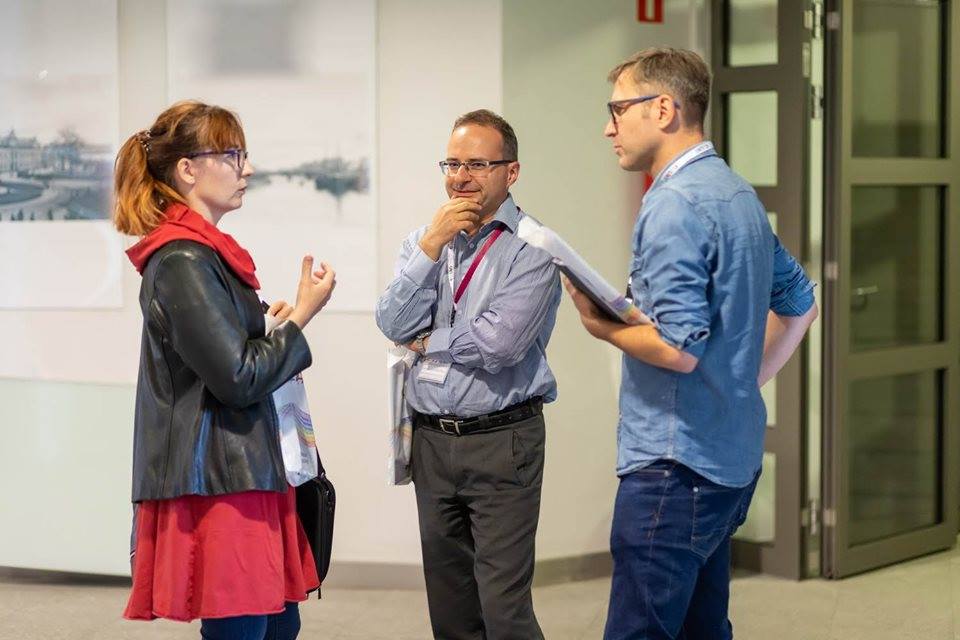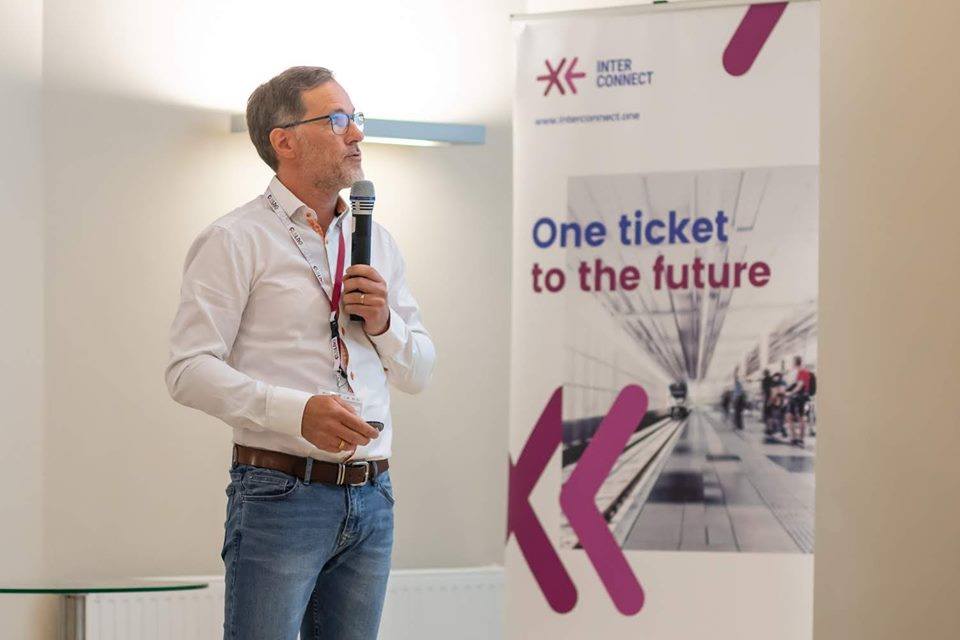Interconnect project mid-term conference in Elbląg
The conference took place in the framework of Interconnect project on 5th September 2019 in Elbląg in the premises of the Association of Polish Communes Euroregion Baltic Poland’s Communes Association of the Baltic Euroregion.
The aim of the Interconnect project is to examine the possibilities of curbing the car-reliant mobility trend in the South Baltic area by means of user-adjusted and more sustainable public transport services for regional and cross-border travels. Therefore the following thematic fields were defined: identification of needs of using alternative means of transport to personal car, traveller friendly offer and strengthening cooperation in the field of public transport.
The conference tackled all of the 3 fields but considering the selection of speakers it mainly has focused on cooperation of different stakeholders in the field of shaping a traveller friendly offer.
The conference was opened by the Mayor of Elbląg, Mr. Witold Wróblewski, who emphasized the growing importance of cooperation between different stakeholders and cities. Agata Ludwiczak, the representative of the Euroregion Baltic presented the aim of the conference i.e. including present condition of public transport integration on the regional level and the analysis of experience of other countries in the Baltic Sea Region.
Conclusions related with local government’s strategic documents (linked with public transport services) in the Warmińsko-Mazurskie Voivodship were presented by Mr. Marcin Wołek, phd, representing both PROTRANS consultant company and University of Gdańsk. Both quantitative and qualitative data including research results of communes belonging to Municipal Functional Area of Olsztyn and lying in the transport range of this city were used. Dynamic urbanization expressed by population growth, a change in its structure (growth in the number of people in school age and working age), life style changes, pressure on communal and educational services, growth of demand on personal car transport and high dynamics of spatial changes are characteristic features of suburban communes. A substantial difference in the demographic structure is seen between city of Olsztyn and its neighbouring communes. Number of residents in productive age is noted in communes around Olsztyn. But in total, in 2010-2015 number of citizens in productive age of MOF Olsztyn (Urban Functional Area of Olsztyn) has fallen by 6.6 thous.
Population growth is accompanied by increasing local revenues , especially linked to its share in PIT (Personal Income Tax) revenues. In the analysed field the per capita revenue growth of communes in the years 2004-2018 amounted to 151-242% but it was accompanied by equally high expenditure dynamics amounting to 98-256% for the same period (Fig. 1).
Quantitative analysis was supplemented by research results of the selected communes of the Olsztyn, Ostróda and Działdowo counties based on the questionnaire published in cooperation with Poland’s Association of the Baltic Euroregion Communes and the Regional Policy Department of the Warmińsko-Mazurskie Voivodship Marshall Office. 8 communes took part in the research study. In the last 4 years the communes which took part in the research study haven’t been involved in the railway infrastructure modernization, however 6 of them were engaged in the modernization or construction of bus stops infrastructure, and one commune constructed parking spaces next to the railway station (thanks to the street reconstruction). Moreover 2 studied communes co-finance a bus route organized by the city of Olsztyn.
Among the declared communes activities in the integrated public transport system development, the majority of the studied units indicated information and promotion activities and the ones connected with construction and modernization of bus stops infrastructure. Apart from them, 2 communes stressed the necessity of financing negotiations due to a part of inter-commune links connection.
Grzegorz Wesołowski who represented Zarząd Dróg, Zieleni I Transportu w Olsztynie (Road, Greenery and Transport Authority of Olsztyn) the city of Olsztyn presented among others the city transport market organization system in Olsztyn and the suburban communes served by public transport. In his presentation titled ‘Integration of public transport in Olsztyn and the suburban communes, he emphasized that 26% of bus transport supply is served by non-municipal operator. Agreements between Olsztyn and the suburban neighboured communes constitute for 5% of the total city transport supply. Among 11 lines crossing the city borders, functioning of 6 lines (108, 110, 112, 114, 124, 129) results from such agreements. The first agreements were signed already in 2012 between Olsztyn, Dywity and Purda.
The number of passengers served by the city transport organized by Olsztyn is gradually rising and amounted to approx. 42.8 mln PLN in 2018, with the revenue from ticket sales of 35.7 mln PLN and the cost of service amounting to 91 mln PLN.
The speaker discussed also the functioning of the Olsztyn City Card, which serves as electronic ticket, electronic purse, enables car park payments and can get a discount on using the Olsztyn City Bike System.
The continuation of tram transport development including prolonging the tram line connecting the housing estates of Jaroty and Pieczewo with the Michelin plant and the City Centre (approx. 8 km) belongs to the key infrastructural investments in Olsztyn. This investment will be accompanied by marking tram-bus lanes on a substantial part of the routes, ITS system development along the new tram route and reconstruction of street system and pedestrian-cyclist path.
Finally the ITS system was presented, whose functionalities for the passenger transport compromise, among others, more than 100 passenger information displays at stops, more than monitoring cameras installed at stops, more than 450 monitoring cameras at intersections, about 50 stationary ticket vending machines at bus stops, about 180 mobile ticket vending machines in vehicles (87% of the stock) and a passenger counting system in 24 buses and 6 trams.
Next presentation done by the representative of the City of Olsztyn was focused on the integration of public transport in European projects SUMBA and PIM. She stressed out that integration of public transport was embedded in the most important strategic documents of Olsztyn. The aim of SUMBA (Sustainable Urban Mobility and Commuting in Baltic Cities) project was to support BSR cities in the implementation of more sustainable intermodal ways of travelling in functional urban areas. Specific goals and tasks for Olsztyn included increasing awareness for sustainable transportation, research on trips and behavior of citizens of Urban Functional Area of Olsztyn and to develop a “Masterplan for commuting”, being a more detailed supplement of the sustainable urban mobility plan for the Functional Urban Area.
The conclusions from the survey of the strategic documents of the local governments located in the area of Olsztyn were presented by Ph. D. Marcin Wołek (PROTRANS and University of Gdańsk). He stressed that the issues of transport and mobility are included in various strategic documents, especially in the development strategies, studies of conditions and directions of spatial development of communes, low emission economy plans, the sustainable public transport development plans and last but not least the sustainable urban mobility plans. In the strategy of transport and mobility of Urban Functional Area of Olsztyn (MOF Olsztyn) of 2014 the transport conditions were discussed in the state context (gradual improvement of internal integrity of the transport system), metropolitan context (suburbanization process), and local context (the diversified level of services accessibility, intercommune diversity in 2014, 15% of the inhabitants of MOF had no access to the public transport services). In the diagnosis of the transport and mobility condition for MOF Olsztyn such weak points as strong pressure of the MOF inhabitants on green areas, housing dispersion in the area of rural communes – high infrastructure construction costs, poor condition of local roads and a high number of road accidents, poorly developed public transport system and poorly spatially urban communication network were indicated. The strong points are the regional policy focussed on the development centres (the position of Olsztyn and MOF Olsztyn in the voivodship strategy), the realization of the key investments for the communication accessibility development of MOF Olsztyn financed by the EU resources and using the funds in the framework of the Development of the Eastern Poland Operational Program.
The speaker presented the sustainable urban mobility plan for FUA (Functional Urban Area) Olsztyn as one of the few example of placing those issues in a wider metropolitan perspective. That document presents a big challenge resulting from the contradictory interests of the particular communes (competing for a resident-taxpayer). A wider perspective than in the communes documents were presented in it stressing the importance of suburbanization processes, low profitability of organizing public transport in the area of the communes of the MOF Olsztyn and the extensive housing location process of the rural areas.
Road and bus stop construction, renovation and construction of pavements, communes internal integrity improvement, inter-commune cooperation and improvement of transport links with Olsztyn are considered as the main directions of actions.
Summing up the speaker indicated that:
- the growth of public transport supply and the possibility of integration with the individual means of transport will be critical for the high level of FUA (Functional Urban Area)accessibility apart from infrastructure investments;
- development of the public transport supply (and individual shared mobility services) would take place in the context of budget restrictions and growing competition between communes for a resident taxpayer;
- creating multilevel local government partnerships is an opportunity – it requires, however, a precise way of agreeing and calculating the funds for transport by self-governements;
- railway stations should constitute themselves as integration centres for all means of mobility.
The actions mentioned above require however complex solutions for the metropolitan level, in which the developing suburbanization process have fundamentally changed the metropolis core – surroundings impact.
Elżbieta Nowak, the Head of Product Development Department of ŁKA - Łódzka Kolej Aglomeracyjna JSC (Aglomeration Railway of Łódź) stressed the importance of cooperation between various partners for preparing the offer in the passenger railway transport. During the speech she presented a short history of ŁKA and its growing role in regional transport market of Łódzkie Voivodeship.
Henryk Szczefanowicz and Włodzimierz Finke (the Department of Transport of the Marshall Office of the Wielkopolskie Voivodship) focussed on the case study of the modernization of the railway line number 356 (Poznań Wschód – Wągrowiec). The key factor of the success related with its modernization was multilevel cooperation of various parties including cooperation of regional government of the voivodship,local governments and between the local governments and voivodship government and PKP Polish Railway Lines JSC (railway infrastructure manager). The feasibility study for the modernization of this line was developed in 2009 and the modernization worth 153 mio. PLN was completed in 2012. As a result of this complex modernization which included not only the railroad infrastructure but also stations and stops (including construction of 2 new ones i.e. Czerwonak Osiedle and Murowana Goślina Zielone Wzgórze) the exploitation work increased from 448 000 train-km in 2012/2013 timetable to 885 000 train-km in 2018/2019 timetable. The journey time decreased by half an hour. It caused the increase in the number of passengers per day from 3 300 in the 2012/2013 timetable to 5 400 in the 2019/2019 timetable (Fig.2). That modernization is a good example of a complex approach based on passenger’s needs.
Tomasz Radzikowski M. Sc., a UG Ph.D. student presented the example of constructing 2 new stops (Gdynia Karwiny and Gdynia Stadion) on the functioning and formerly modernized railway line number 201 in Poland. The stops themselves were built in the framework of the project of constructing the Pomeranian Metropolitan Railway. Their construction were co-financed by the European Union in the framework of the Regional Operation Program of the Pomeranian Voivodship (ca. 20 mio. PLN) with the participation of Gdynia own finance (ca. 4 mio. PLN). The speaker focussed on the demand potential of the properly selected localization. His analysis was made from the perspective of a railroad infrastructure manager who is responsible for the railway traffic and cares about proper train capacity of the line. The distance between the existing stations/stops, train traffic peak times, railway line character and its infrastructure capacity, localization on the railway line, longer journey time for other passengers and the maintenance and exploitation costs were included to the mobility – exploitation factors. On the other hand stops localization and their load area accessibility, links with other means of transport and shorter journey time for passengers using the new stops are the demand factors. He illustrated difficult compromise with the data showing the demand growth on both the stops. The total number of the passengers served by both of the stops (Gdynia Karwiny and Gdynia Stadion) reached almost 14 000 in July 2018.
Henrik Boren from the Blekinge Institute of Technology in his presentation titled ‘The Model for sustainable transport systems’ talked about challenges the transport sector faces. Most of them are of environmental nature. The speaker transferred the general considerations on the particular comparable model of evaluating particular powertrains in their whole lifecycle comprising the production, exploitation and utilization stage. As for results, electrical vehicles powered by the electricity produced by wind permit the least. Also, electrical vehicles powered by the energy-mix which is characteristic of Sweden are environmentally friendly solution.
In the case of buses, the speaker indicated the far-reaching differentiation of the impact of the used drive on environment. The complex analysis in this case comprised not only the greenhouse gases emissions but also the acidification potential – AP, eutrophication potential – EP, photochemical creation potential – POCP, and human toxicity potential – HTP.
According to the speaker the realization of the sustainable transport system development strategy should be conducted on four fields, respectively resourceful, spatial, technological and managerial (political). The last one is of the fundamental importance because of the need to introduce the necessary incentives for the full retreat from fossil fuels. On the one hand it will decrease the taxation base for the public authorities (e.g. excise) but on the other hand it will compensate by the lower death rate caused by air pollution (about 3000), lower expenditures on health care, lower company expenditures connected with the lack of fuel import and slowing down of the climate changes process.
Finally a roadmap promoting competitive and sustainable transport in Blekinge region till 2022 was presented. Its main components are the new rules of cooperation between urban and regional government including the central administration needs, scenario simulation models, synchronized road map schedules for transformation on the local and regional level, learning and network environment (web learning environment) and the wide regional mobilization of the resources of the Blekinge region.
Krzysztof Rudziński, CEO of the Innobaltica company from Pomeranian region explained the concept of the ticket integration process in the whole voivodship. He underlined the complexity of this undertaking, bringing an example of more than 90 ticket systems functioning in the region. The project is going to be co-financed from the EU sources and first pilot actions should take place around 2022.
Matthias Nussgen (Rostock) presented slides intitled ‘Rostock/Macklenburg Vorpommern – integrated transport in the agglomeration – benchmarks from the operational point of view’. The speaker briefly presented the urban local economy in which apart from the traditional shipyard and fishing sectors, also airplane and renewable sectors are playing a growing role. Most people come to Rostock by car (36.4%), on foot (32.5%), public transport (17%) and by bike (14.1.%). The Intercombi ticket for the ferry between Germany and Sweden was presented.
Piotr Olszewski the head of the Commercial Office Polregio (regional train operator in Poland) in his presentation titled ‘Cooperation of Polregio with urban transport providers’ presented two models of cooperation between the operator and urban transport providers i.e.:
- accepting urban transport tickets in the Polregio trains,
- a common joint ticket offer – railway + urban transport.
Ticket acceptance is the simplest solution for the passenger because it enables using periodical urban transport ticket in trains. That solution has been successfully used by Polregio in Wrocław since 2012. In the case of joint offers the cooperation consists in creating a new offer of the integrated ticket which is valid both in trains and in the means of urban transport. Such a model functions in the case of one-way and monthly tickets valid for train and urban transport in Toruń and/or Bydgoszcz.
Urbancard solution of June 2013 in Wrocław served as an example of accepting urban public transport tickets in the POLREGIO trains. It is based in an agreement between three parties: POLREGIO, Koleje Dolnośląskie (Lower Silesian Railways and the commune of Wrocław. Both short term tickets (one day, 3 days) and long term tickets (monthly, quarterly) coded om Electronic Urbancard are accepted. The system covers the area of Wrocław (all the stations and stops bearing the name ‘Wrocław’ – 20 stations and stops). The passenger who buys the urban public transport ticket can travel on the POLREGIO and the Koleje Dolnośląskie trains free of any extra charges. The increase in the number of passengers using the Urbancard solution is substantial (600,000 passengers in 2015, more than 800,000 in 2016, almost 1 mln in 2017). This year the number is expected to exceed 2 mln passengers.
Summing up, Director Olszewski presented the benefits of accepting Urbancard. There are as follows:
- synergy of both partners creating growing interest in public transport,
- increase in the revenue from selling urban transport tickets,
- attracting new urban public transport and railway passengers,
- limiting the number of cars in the city centre due to the possibility of using public transport,
- high residents support for transport integration solutions,
- integrated transport policy realization.
Summing up the conference it was mentioned as follows:
- Short term development perspective has been used so far (2007-2013, 2014-2020, 2021-2027 etc.). Designating long term free from political debate strategic priorities is necessary.
- Adaptation of cities to climate changes should be one of the indicators of transport and mobility planning. The plans created and passed last spring are merely the first step in that direction.
- The discussed case studies indicate that partnership is the foundation of creating the integrated public transport offer.
- Metropolitan areas (MOF) constitute extremely difficult areas for public transport integration, as they integrate totally different patterns of transport behaviour. Moreover the communesbelonging to metropolitan areas (MOF) are extremely varied for financial demographic and urban planning potential.
- Metropolitan area/urban functional area delimitation should take into greater account connections network of daily travel and accessibility in the interregional system.
- The service low scarcely populated areas should be more strongly based on shared mobility services (re-defining the role of personal car and bike-car sharing, bike-sharing, car-pooling, van-pooling – the solutions based on, among others, the experience of the Kutsuplus of Helsinki services).
- The commune school bus service should be reassessed. Should it be of a closed character?
- The voivodship government should be a partner for the railway sector parties (e.g. Pomeranian Metropolitan Railway and line 356). Local governments should also participate financially in stations, stops and integrations centres infrastructure modernization because complex additional equipping with elements which rise the integration level (P&R, B&R, K&R) is key for the railway modernization success.
- Localization of railway stops should be designated by the optimum considering the supply and demand factors.
- Modern IT solutions based on platforms of integrated mobility services will play a bigger role in clearing public transport services. They allow for precise clearing between parties, and on the other hand for attracting other partners and services to join the system (transport and other communal services). The offer the passenger a full range of services at one place at the same time. Such a solution enables the evolution of the system in the direction of Mobility – as-a-service with remaining public control over the data flow.
- The approach based on life Cycle Assessment should be used in the context of economic evaluation. It is a fundamental change in the approach to economic analyses. The environmental effects assessment should be very complex and should comprise, apart from global warming potential GWP100, acidification potential – AP, eutrophication potential – EP, photochemical creation potential – POCP, and human toxicity potential – HTP.
- The so-called ‘soft projects’ consisting in developing international cooperation (e.g. INTERCONNECT) constitute an important foundation for good practises popularization. They also contribute to the limitation of risk in the modern innovative solutions development e.g. in the scope of tariff-ticket integration.
Dr Marcin Wołek PROTRANS, 30.09.2019
You can watch the video clip summarizing the conference here.
Download
- dr Marcin Wołek - Wnioski z pierwszych konsultacji
- Platforma zintegrowanych USŁUG MOBILNOŚCI w transporcie publicznym na POMORZU
- Dr Sven Borén - Model for sustainable transport systems
- Henryk Szczefanowicz, Włodzimierz Finke - ROZWÓJ REGIONALNEGO KORYTARZA TRANSPORTOWEGO POZNAŃ – WĄGROWIEC
- Kwestionariusz ankiety
- Matthias Nuessgen - Intermodal transport Rostock
- Analiza studium przypadku: nowe przystanki kolejowe na istniejącej linii kolejowej
- dr Marcin Wołek - Wnioski z przeglądu dokumentów strategicznych samorządów lokalnych w województwie warmińsko-mazurskim
- Integracja transportu publicznego: projekty SUMBA i PIM
- Współpraca POLREGIO z organizatorami transportu miejskiego
- Podsumowanie konferencji/Summary of the conference
Gallery



